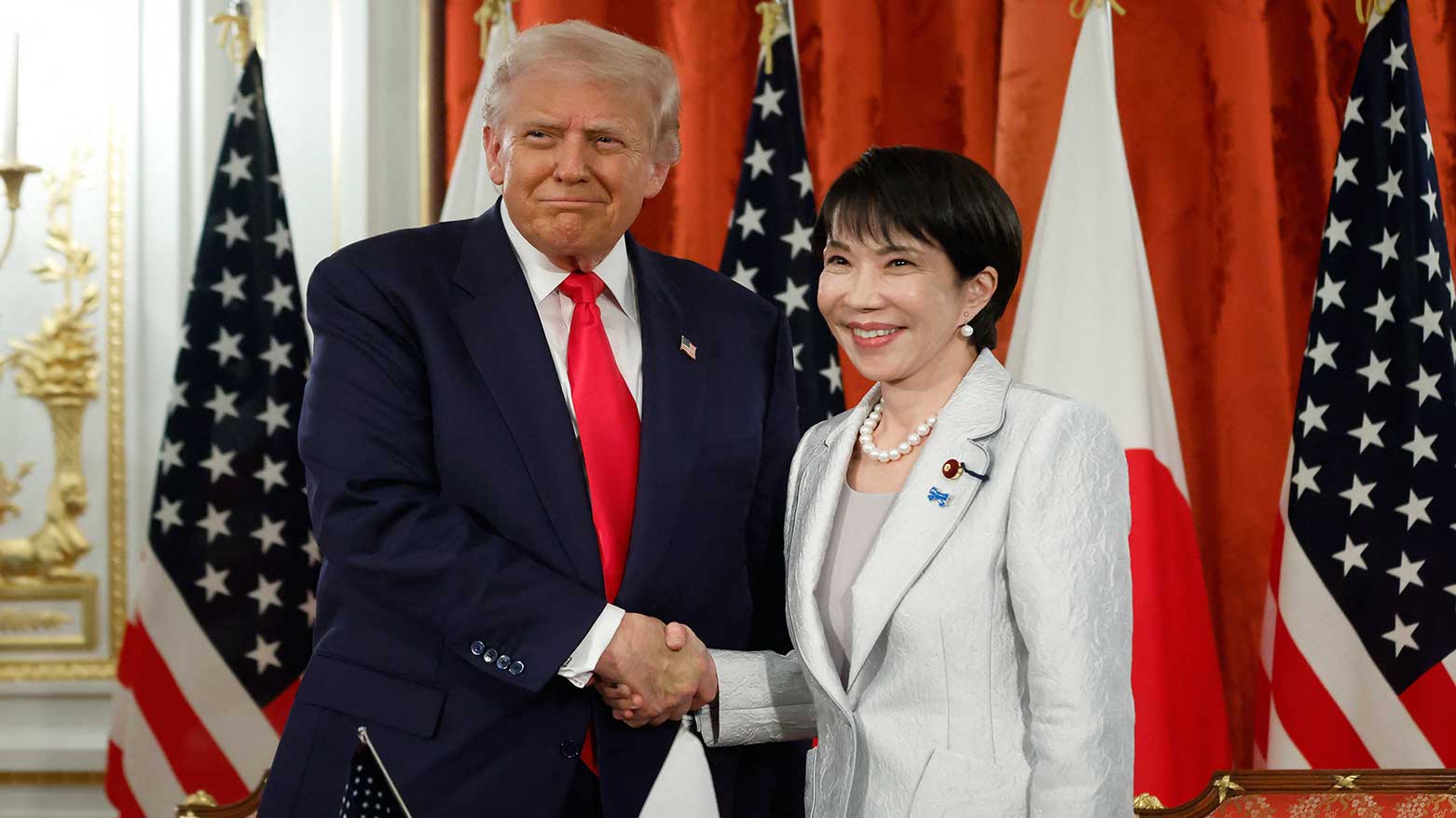Japan’s New PM Hails ‘Golden Age’ with US as Trump Visits Tokyo
Tokyo and Washington sign rare earths deal amid shifting global power dynamics

ERBIL (Kurdistan24) — Japan’s newly appointed Prime Minister Sanae Takaichi, the country’s first woman to hold the post, warmly welcomed US President Donald Trump in Tokyo on Tuesday, vowing to usher in a “golden age” of Japan-US relations. The meeting culminated in a new agreement aimed at securing critical minerals and rare earths — a move seen as a direct response to China’s tightening grip on the global supply chain.
Takaichi, who assumed office just last week, called Trump a “true friend of Japan” and praised his “unprecedented historic achievement” in brokering peace efforts between Thailand and Cambodia, as well as his role in securing the Gaza ceasefire.
In an unexpected gesture of admiration, she announced her intention to nominate Trump for the Nobel Peace Prize — a statement later confirmed by the White House.
“It’s a great honor to be with you, especially so early in what will be, I think, one of the greatest prime ministers,” Trump said during their meeting at the Akasaka Palace. “The United States and Japan are allies of the strongest level.”
The leaders signed an agreement pledging cooperation to ensure the resilience and security of rare earth and critical mineral supply chains, at a time when Beijing has imposed sweeping restrictions on its rare earth industry.
Trump recently threatened to impose 100 percent tariffs on Chinese imports in retaliation.
Following the talks, Trump met with families of Japanese nationals abducted by North Korea decades ago, reaffirming Washington’s support for their efforts to seek justice.
Trade and Security Priorities
Trump’s Tokyo visit — part of a broader Asia tour including stops in Malaysia and South Korea — comes as Washington and Beijing inch closer to resolving their long-running trade war.
Negotiators from both sides have confirmed a “framework” agreement to ease tensions between the world’s two largest economies.
In Japan, discussions focused on deepening trade and security cooperation. Takaichi reaffirmed Japan’s commitment to boost defense spending to two percent of GDP this fiscal year — ahead of schedule — as Tokyo adopts a more assertive military posture amid deteriorating ties with China.
“Japan must ensure peace through strength,” Takaichi said, underscoring her government’s plan to expand counter-strike capabilities and deploy advanced US-made Tomahawk missiles alongside domestically produced systems.
The United States currently stations about 60,000 troops in Japan under a decades-old security treaty. Trump, however, has called on Tokyo to contribute more financially to host the US military presence, once describing the agreement as “a free ride.”
If the United States were attacked, Japan "doesn't have to help us at all" and is free to "watch it on a Sony television", Trump said in his first term.
Economic Stakes and Political Symbolism
Trade remains a central issue, with Japanese car exports to the US falling 24 percent in value year-on-year amid tariff pressures. Under an earlier deal, Tokyo also pledged to invest $550 billion in the US economy.
Takaichi’s meeting with Trump carries both strategic and symbolic weight. She is widely seen as a political heir to the late Shinzo Abe, Japan’s longest-serving prime minister, who maintained a close personal relationship with Trump before his 2022 assassination.
For Trump, the Tokyo visit is an opportunity to reinforce US alliances in Asia ahead of his upcoming meeting with Chinese President Xi Jinping in South Korea — their first since his return to office in January.
Both leaders framed Tuesday’s meeting as a reaffirmation of the enduring US-Japan alliance, one that continues to anchor Washington’s strategic presence in the Indo-Pacific.
As Takaichi put it: “I would like to realise a new golden age of the Japan-US Alliance, where both our nations become stronger and more prosperous together.”
